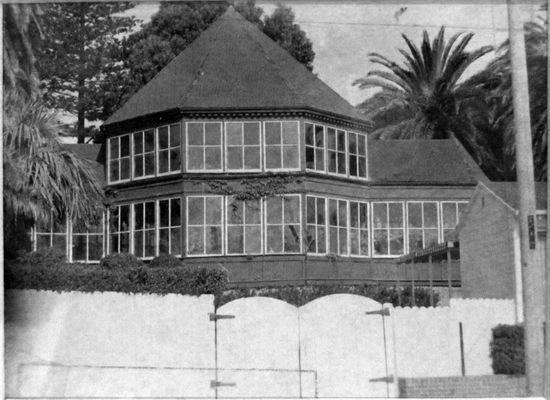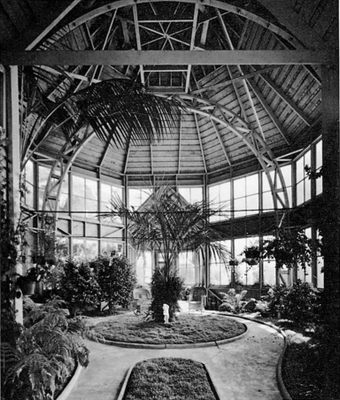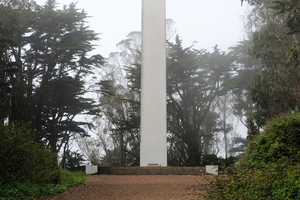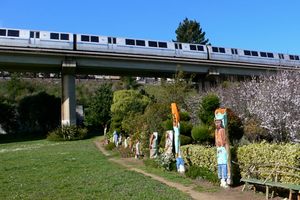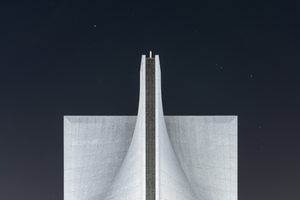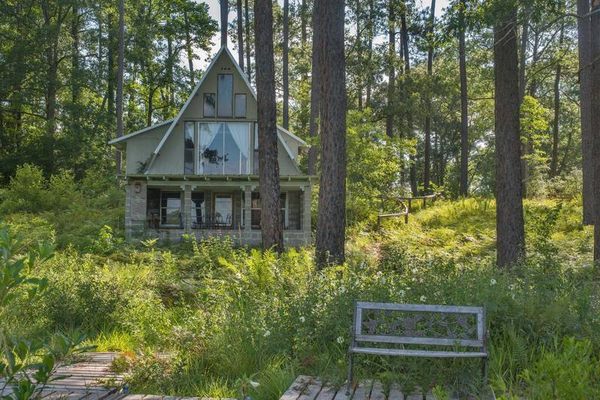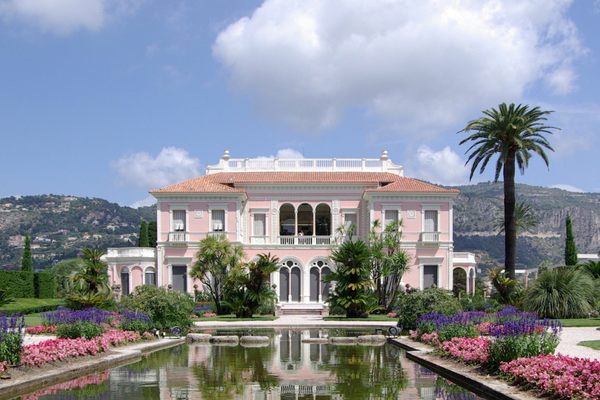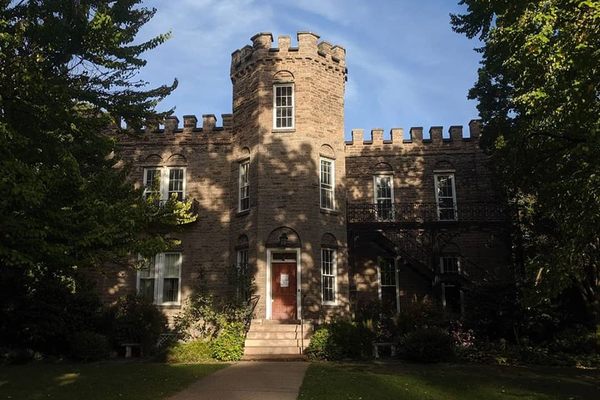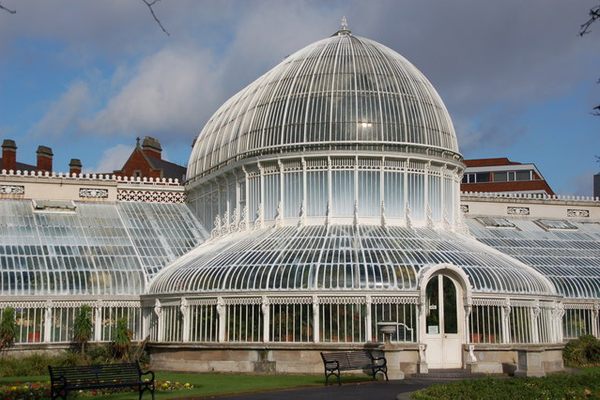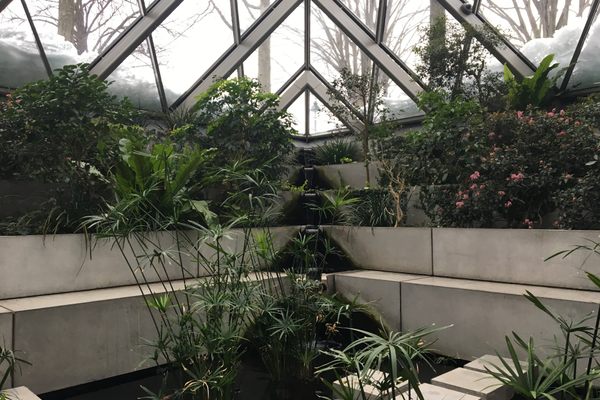About
San Francisco’s Sunnyside Conservatory is a botanic jewel defined by a century-old palm grove and surrounding gardens. The beautiful landmark on Monterey Boulevard has survived six owners, the 1906 earthquake, and is sometimes known as "the other conservatory" (compared to the better-known Conservatory of Flowers located in Golden Gate Park).
Sunnyside Conservatory's previous owners have included a balloon aircraft inventor who was killed by a locomotive, a woman named Temperance who named the conservatory Sunnyside Laboratories and planned to turn it into a sanitarium, and an entrepreneur who marketed bottled water fortified with mineral supplements in the 1920s. Currently, it is owned by the San Francisco Recreation and Parks Department.
Located in the Outer Mission district, the generally south-facing hillside was formerly pastures and farmland as part of Rancho San Miguel. In 1891, it was laid out for residential development by the private real estate investment Sunnyside Land Company, founded by Behrend Joost. Joost was a German-born hardware entrepreneur and real-estate investor whose greatest claim to fame was starting San Francisco’s first electric streetcar, the San Francisco and San Mateo Electric Railway and the Sunnyside development was one of the line’s stops.
During the development’s first year, a streetcar gripman named Charles H. Taylor bought his Sunnyside lot. Located on what is now known as 258 Monterey Boulevard Taylor and his wife Ida, built their home, on the current site of the conservatory.
In early 1898, the Taylors sold the property to William A. Merralls, a British-born inventor and serial entrepreneur. Merrill's made his money in the invention and sale of power mining equipment; he also had shipping interests and shopped proposals for flying engines. He invented a new gasoline engine to power mining equipment, a cooling system for subways, a self-propelled balloon aircraft, and later, founded an aircraft company that produced biplanes from his own design.
William’s original vision for the property was not only to gather up exotic and rare earthly plant specimens for his private enjoyment but also to bring celestial wonders closer to home. And so, in the early 1900’s he constructed his Sunnyside Conservatory. The wood-shingled two-story center octagon was flanked by single-story wings on the east and west. Concrete walkways wound around the building, and he put in a variety of trees and plants on the property. In doing so, he built a Victorian oasis next to his home on an old dairy farm in the development. The Merralls' house, which still stands next door, was capped with an observatory that had a rotating, slotted wooden dome from where he could gaze through a telescope at the night sky thereby fulfilling his original vision. William’s second wife, with the unusual name of Temperance Laura, is said to have had even further plans to further expand the grounds and buildings to create a sanitarium. The name of the plan was Sunnyside Laboratories and although it was never realized, the name would stick with the location for decades.
While visiting friends in Alameda in 1914 and in the midst of financial difficulties, William however was tragically killed by a locomotive train rounding a blind curve. Temperance, unable to keep up with property expenses, was foreclosed upon in 1916. The property would remain vacant and unattended in the bank’s possession until 1919.
It was during 1919, that the bank holding the mortgage finally found a buyer. Businessman Ernest Van Beck and his wife were newcomers to the area who reportedly gained and lost fortunes in gold mining and bottled mineral water enterprises. They purchased the property for $12,000 and moved into the Merralls’ former home. The story, as has been passed down, is that they initially believed the adjacent grounds were merely a wilderness of naturally occurring vegetation. It was not until while retrieving one of their dogs who escaped into the brambles that they first discovered the massive conservatory building on their property.
By the late 1970s, after passing through a series of owners, the building had fallen into grave disrepair. One owner had demolished a side wing before the building was decided a Historical Landmark in 1975. The City and County of San Francisco purchased the property as a park in 1980.
The original octagonal conservatory had two wings and was set within a carriage turn around. Now rebuilt almost entirely from scratch using old-growth redwood and copper, the octagonal building has a new roof and restored skylights, original bentwood truss arches, a glazed concrete floor, double-glazed windows, a double-height row of operable windows, an interior trimmed out in salvaged old-growth redwood from Sonoma, modern wiring, insulation, sprinklers, and heaters. The property was made wheelchair-accessible and a bathroom was added.
The use of color on the glazed concrete floor delineates the location of the original flowerbeds planted by William Merralls.
The surrounding garden, which includes a rare Chilean wine palm and a centurion Norwalk pine, has been completely renovated and new plants have been added. The extremely slow-growing Chilean wine palm is considered the most cold-hardy feather palm and has the widest circumference of any palm in the world, sometimes reaching upwards of 15 feet. Twenty-three small bronze sculptures depicting creatures real and made up have been tucked in the garden and along the walkways, intended to be discovered and touched. Today the grounds are covered with drought-tolerant succulents, exotic Mediterranean and semi-tropical plants surrounded by other grand palms, many from Merralls' original planting providing visitors with both a look into the past as well as at what has been restored and preserved for years to come.
Related Tags
Published
October 1, 2021
Sources
- https://sfrecpark.org/665/Sunnyside-Conservatory
- https://www.sunnysideconservatory.org/about
- https://sunnysidehistory.org/2020/10/24/sunnyside-history-in-photos-places/
- https://sunnysidehistory.org/2016/06/25/w-a-merralls-inventor-and-entrepreneur-of-sunnyside/
- https://www.sfparksalliance.org/our-parks/parks/sunnyside-conservatory
- https://www.sfgate.com/bayarea/article/111-year-old-Sunnyside-Conservatory-reopens-3279302.php






